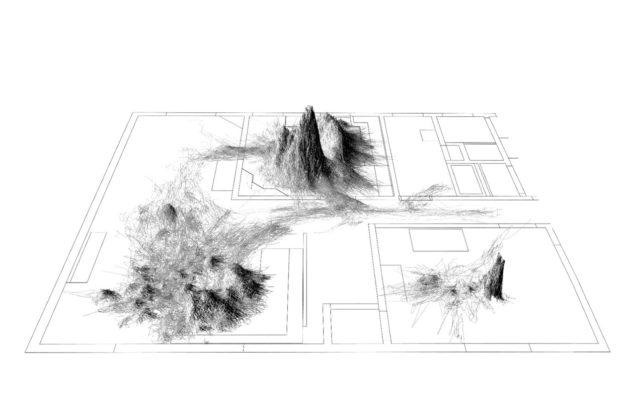My four-year old grandson is an old soul. He is one of the most loving, sensitive, kind and joyful people I know. He also has a hyper-active body, an incredibly curious mind, and relentlessly intense feelings. It’s a lot for a child to manage. It’s a lot for anyone to manage. The question is: how can we help our kids and each other stay in touch with the unfettered joy and love we were born with, while managing our unruly bodies, our unfocused minds, and our unpredictable emotions? This post suggests that mindfulness may be a good place to start.

We hear a lot these days about the need for mindfulness: mindful leadership, mindful eating, mindful walking. But what does that really mean and how can we experience the benefits more fully without retreating to a mountain cave and meditating all day? Buddha found enlightenment under a Bodhi tree, but if you’re like me, you might have other priorities that need your attention.
Mindfulness is the quality of being conscious or aware. It is a mental state achieved by focusing one’s awareness on the present moment while calmly acknowledging and accepting one’s feelings, thoughts, and bodily sensations. Practicing mindfulness is a process of bringing one’s attention to internal and external experiences. Research indicates that practicing mindfulness is strongly correlated with well-being and perceived health.
Mindfulness practice usually starts with more conscious awareness of the breath and then broadens to being more conscious of thoughts, feelings, and actions. It takes disciplined practice over a long period of time before the full effects begin to sink in and manifest themselves.
Omar Mateen, the Orlando terrorist, had clearly not found his Bodhi tree. He found an AR15 instead and unleashed his violence on innocent, unsuspecting people enjoying themselves in a bar. There is a plethora of opinions on the cause of this tragedy: radical Islamic terrorism, homophobic violence, mental illness, lax gun laws. I don’t think the blame can be placed on any single cause, but on the interplay of social, psychological, political, and economic factors. There is no doubt that Omar Mateen was an angry, alienated man who oppressed and abused his wife, claimed allegiance to multiple terrorist groups (Hezbollah, Al Qaeda, and ISIS), and hated gays. The question is, how did he reach a point where he purchased assault weapons and wantonly massacred 49 people. What was the chain of personal experiences, decisions, and dispositions that transformed him from a joyful, loving child to a raging killer? And what event or experience might have broken a link in that chain and led to a different outcome?
Just as we heard rash solutions after 9/11, we are hearing abundant calls to action in response to this tragedy. Perhaps there should be a call to inaction. Perhaps we need time to reflect on how a person can go from loving and innocent to hateful and lethal. Banning all Muslims from entering the US is as absurd as banning all guns. Those are not reasonable solutions. I’m more interested in breaking that chain of events, experiences, and decisions that can lead to mass slaughters.
Let’s go back to my grandson – this beautiful, loving, joyful boy who gives the warmest hugs and kisses of any child I have ever known. Yes, I’m totally biased and partial. My question, however, is what can I do as a grandparent to help him stay connected to his joy and not lose track of who he is as he struggles with the human challenges of managing his body, his mind, and his feelings? Surely, events will happen in his life that will jar him loose from his loving foundation. He will probably make decisions he regrets at times because of his unchecked curiosity. He will probably say things he wished he hadn’t said in reaction to his intense feelings. He will probably break a few glasses as a byproduct of his hyper-active body.
I feel confident, however, that my grandson will grow up to be as full of joy and love as he is now, and he will express that joy in healthy and productive ways. I hold that belief because he has wonderful parents, he will go to the best schools, he will have friends who have little reason to be angry or alienated, he will get the best emotional and physical health care if and when he needs it, and he will be encouraged to be mindful about his thoughts, feelings, and actions. I often hear his mother say, “Do you hear yourself right now?” or “Can you get control of your body now?” or “Take three deep breaths and feel the calm.”
I doubt if Omar had any of those experiences or heard any of those things when he was growing up. This is not to excuse Omar or to blame his parents, teachers, or friends. It’s to raise a larger issue. What do we need to do as individuals and as a society to be more mindful about how we live, how we learn, and how we work? What can we do as individuals and a society to create a more loving environment is which people dance for joy. It is unclear to what extent Omar Mateen was driven by ideology or homophobic hate. It is clear that there are a lot of unanswered questions about how he could reach such a state of despair that he would commit such a despicable act. And it is also clear that there are many more Omars “out there” who have not had the experiences, privileges, or just good DNA luck who are struggling to find a way back to love and joy.
In Lin-Manuel Miranda’s acceptance speech for his lyrics in “Hamilton,” he read this sonnet to acknowledge the Orlando tragedy and to plea for a return to love:
“My wife’s the reason anything gets done
She nudges me towards promise by degrees
She is a perfect symphony of one
Our son is her most beautiful reprise.
We chase the melodies that seem to find us
Until they’re finished songs and start to play
When senseless acts of tragedy remind us
That nothing here is promised, not one day.
This show is proof that history remembers
We lived through times when hate and fear seemed stronger;
We rise and fall and light from dying embers, remembrances that hope and love last longer
And love is love is love is love is love is love is love is love cannot be killed or swept aside.
I sing Vanessa’s symphony, Eliza tells her story
Now fill the world with music, love and pride.”
To me, Miranda’s sonnet is a brilliant summary of what we must do to return to love. It’s in all our hearts in the beginning. We just need to find our way back.
I have far more questions about this issue than answers. But, for me, mindfulness needs to play a vital role. Since I’m prone to simplification, my simple solution is to find ways to focus our minds, to relax our bodies, and connect with our emotions. In order to do that, we need to first notice what’s going on – observe what’s happening and remember who we are. We need to tune into our sensations, thoughts, and feelings and ask why are we having that experience right now in this moment. And then we can choose to shift to love, joy, and stillness. If you would like to explore these processes in depth go to www.calmclarity.org, www.energysway.com, or www.betteru.org.
I am grateful to be a daily witness to my grand-children’s beautiful, loving joy. May it grow and spread.
Also published on Medium.



